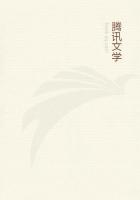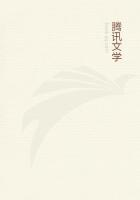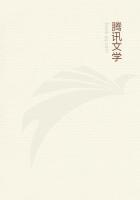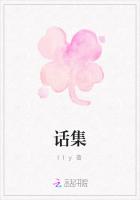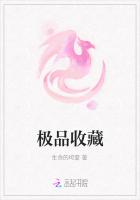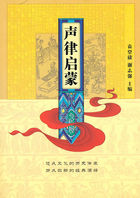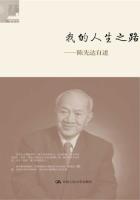You have most of you seen, probably, that great masterpiece of Rubens which hangs in the gallery of Brussels, that swift and wonderful pageant of horse and rider arrested in its most exquisite and fiery moment when the winds are caught in crimson banner and the air lit by the gleam of armour and the flash of plume. Well, that is joy in art, though that golden hillside be trodden by the wounded feet of Christ and it is for the death of the Son of Man that that gorgeous cavalcade is passing.
But this restless modern intellectual spirit of ours is not receptive enough of the sensuous element of art; and so the real influence of the arts is hidden from many of us: only a few, escaping from the tyranny of the soul, have learned the secret of those high hours when thought is not.
And this indeed is the reason of the influence which Eastern art is having on us in Europe, and of the fascination of all Japanese work. While the Western world has been laying on art the intolerable burden of its own intellectual doubts and the spiritual tragedy of its own sorrows, the East has always kept true to art's primary and pictorial conditions.
In judging of a beautiful statue the aesthetic faculty is absolutely and completely gratified by the splendid curves of those marble lips that are dumb to our complaint, the noble modelling of those limbs that are powerless to help us. In its primary aspect a painting has no more spiritual message or meaning than an exquisite fragment of Venetian glass or a blue tile from the wall of Damascus: it is a beautifully coloured surface, nothing more. The channels by which all noble imaginative work in painting should touch, and do touch the soul, are not those of the truths of life, nor metaphysical truths. But that pictorial charm which does not depend on any literary reminiscence for its effect on the one hand, nor is yet a mere result of communicable technical skill on the other, comes of a certain inventive and creative handling of colour. Nearly always in Dutch painting and often in the works of Giorgione or Titian, it is entirely independent of anything definitely poetical in the subject, a kind of form and choice in workmanship which is itself entirely satisfying, and is (as the Greeks would say) an end in itself.
And so in poetry too, the real poetical quality, the joy of poetry, comes never from the subject but from an inventive handling of rhythmical language, from what Keats called the 'sensuous life of verse.' The element of song in the singing accompanied by the profound joy of motion, is so sweet that, while the incomplete lives of ordinary men bring no healing power with them, the thorn-crown of the poet will blossom into roses for our pleasure; for our delight his despair will gild its own thorns, and his pain, like Adonis, be beautiful in its agony; and when the poet's heart breaks it will break in music.
And health in art - what is that? It has nothing to do with a sane criticism of life. There is more health in Baudelaire than there is in [Kingsley]. Health is the artist's recognition of the limitations of the form in which he works. It is the honour and the homage which he gives to the material he uses - whether it be language with its glories, or marble or pigment with their glories - knowing that the true brotherhood of the arts consists not in their borrowing one another's method, but in their producing, each of them by its own individual means, each of them by keeping its objective limits, the same unique artistic delight. The delight is like that given to us by music - for music is the art in which form and matter are always one, the art whose subject cannot be separated from the method of its expression, the art which most completely realises the artistic ideal, and is the condition to which all the other arts are constantly aspiring.
And criticism - what place is that to have in our culture? Well, Ithink that the first duty of an art critic is to hold his tongue at all times, and upon all subjects: C'EST UN GRAND AVANTAGE DEN'AVOIR RIEN FAIT, MAIS IL NE FAUT PAS EN ABUSER.
It is only through the mystery of creation that one can gain any knowledge of the quality of created things. You have listened to PATIENCE for a hundred nights and you have heard me for one only.
It will make, no doubt, that satire more piquant by knowing something about the subject of it, but you must not judge of aestheticism by the satire of Mr. Gilbert. As little should you judge of the strength and splendour of sun or sea by the dust that dances in the beam, or the bubble that breaks on the wave, as take your critic for any sane test of art. For the artists, like the Greek gods, are revealed only to one another, as Emerson says somewhere; their real value and place time only can show. In this respect also omnipotence is with the ages. The true critic addresses not the artist ever but the public only. His work lies with them. Art can never have any other claim but her own perfection: it is for the critic to create for art the social aim, too, by teaching the people the spirit in which they are to approach all artistic work, the love they are to give it, the lesson they are to draw from it.
All these appeals to art to set herself more in harmony with modern progress and civilisation, and to make herself the mouthpiece for the voice of humanity, these appeals to art 'to have a mission,' are appeals which should be made to the public. The art which has fulfilled the conditions of beauty has fulfilled all conditions: it is for the critic to teach the people how to find in the calm of such art the highest expression of their own most stormy passions.
'I have no reverence,' said Keats, 'for the public, nor for anything in existence but the Eternal Being, the memory of great men and the principle of Beauty.'

